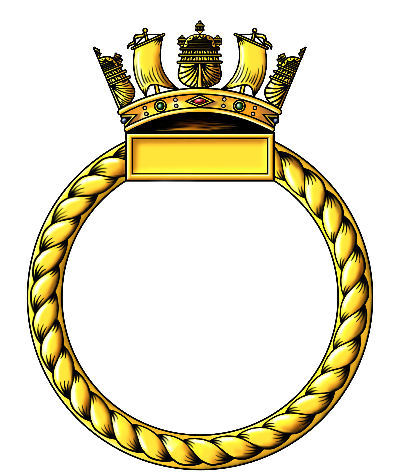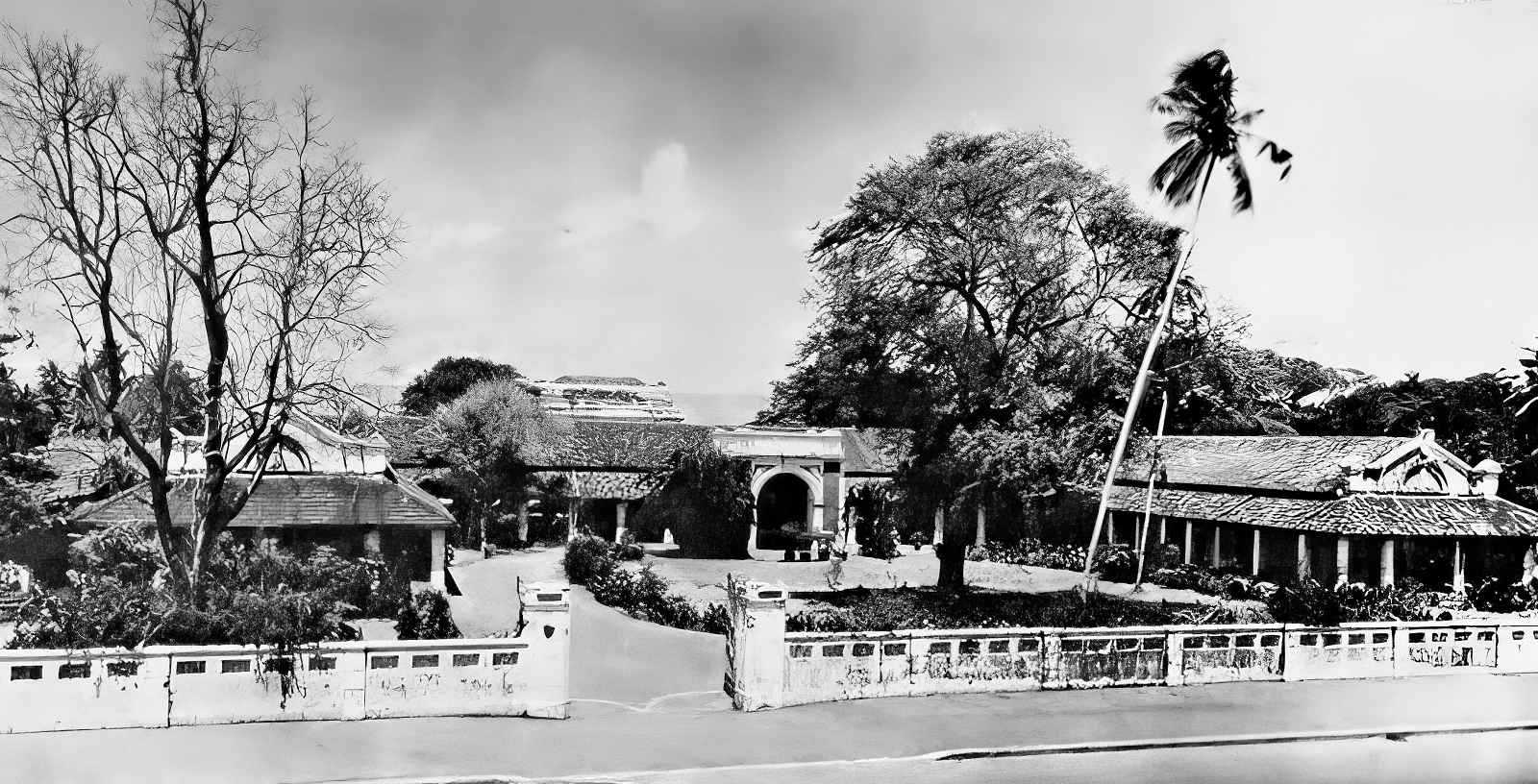R.N. Auxiliary Hospital

No badge issued for this establishment
Location
Colombo, Ceylon
Commanding Officers
Surgeon Captain E. C. Davis, MD
Related items
R.N. Auxiliary Hospital, Colombo
Reminiscences
None
Gallery
None
R.N.A.H. St. Peter's, Colombo

St. Peter's College, Colombo, Ceylon requisitioned as R.N. Auxiliary Hospital
Military hospital for Indian troops transferred to Admiralty control
Situated some five miles south of Colombo, on the main road to Mount Lavinia and Galle this establishment was originally occupied by St. Peter's College, a Roman Catholic boys' school. Earlier in the war it had been requisitioned by the Army for use as a military hospital for Indian troops; on the playing fields of the school a series of 14 communicating 'banda' style wards were erected, these were huts with walls of sacking stretched over a wooden frame and treated with cement and thatched with 'cadjan' banana leaf roofing. When it was proposed t in early 1944 to convert the establishment to an Auxiliary Naval Hospital a great deal of additional construction was necessary to provide suitable accommodation for European patients.
Urgent need to expand hospital bed capacity in Ceylon
Planned to open in September 1944 the project was entirely overseen by the staff of Flag Officer, Ceylon, whose lack of insight into the operational background of naval hospitals on the island led to the repeated lowering of priority for the work. It was almost impossible for the Fleet Medical Officer to bring home the urgent need for this hospital until the end of June 1944 when it was officially reported that the hospital bed strength on the Island of Ceylon was totally inadequate to deal with essential commitments, that no pool or reserve of officers, V.A.Ds. (Voluntary Aid Detachment nurses)., or sick berth staff existed to replace losses due to a constant high rate of sickness. At this time R.N.A.H. Colombo had a bed strength was 550, but the proportion of beds for sick officers was insufficient, as was that for sick members of the local female Service population among whom the incidence of sickness was especially high. This crisis at the main R.N. Auxiliary Hospital in Colombo forced more urgent efforts to be taken too sped up construction.
The site was able to accept a limited number of patient’s in august 1944 when a small number of wards became fit for use; as yet no facilities existed for investigating or treating general patients, and were there any staff for nursing them, however beds were available to which suitable selected cases could be transferred. At the start of October all venereal disease patients from the R.N.A. H. Colombo were transferred to St. Peter's along with a number of invalids awaiting passage while technically remaining on the books of R.N.A.H. Colombo. Even with the limited transfer of patients to the St. Peter’s wards R.N. Auxiliary Hospital, Colombo, was so overcrowded with patients by October that further routine admissions were impossible, and only urgent cases could be received. While under construction
The hold-ups in the arrival of lend-lease consignments from America resulted in the planned expansion of the X-ray department being delayed and the bulk of this work being done by the General Hospital X-ray Department. Shortage of other equipment, particularly microscopes, necessitated the bulk of bacteriological and pathological work being performed by the Ceylon Government Laboratory. In due course stores and equipment started to arrive from the United States and the hospital approached independence, with the exception of certain essentials.
Urgent need to expand hospital bed capacity in Ceylon
Planned to open in September 1944 the project was entirely overseen by the staff of Flag Officer, Ceylon, whose lack of insight into the operational background of naval hospitals on the island led to the repeated lowering of priority for the work. It was almost impossible for the Fleet Medical Officer to bring home the urgent need for this hospital until the end of June 1944 when it was officially reported that the hospital bed strength on the Island of Ceylon was totally inadequate to deal with essential commitments, that no pool or reserve of officers, V.A.Ds., or sick berth staff existed to replace losses due to a constant high rate of sickness. At this time R.N.A.H. Colombo had a bed strength was 550, but the proportion of beds for sick officers was insufficient, as was that for sick members of the local female Service population among whom the incidence of sickness was especially high. This crisis at the main R.N. Auxiliary Hospital in Colombo forced more urgent efforts to be taken too sped up construction.
The site was able to accept a limited number of patient’s in august 1944 when a small number of wards became fit for use; as yet no facilities existed for investigating or treating general patients, and were there any staff for nursing them, however beds were available to which suitable selected cases could be transferred. At the start of October all venereal disease patients from the R.N.A. H. Colombo were transferred to St. Peter's along with a number of invalids awaiting passage while technically remaining on the books of R.N.A.H. Colombo. Even with the limited transfer of patients to the St. Peter’s wards R.N. Auxiliary Hospital, Colombo, was so overcrowded with patients by October that further routine admissions were impossible, and only urgent cases could be received. While under construction
Opened as an independent Auxiliary Hospital
St. Peter’s was to become an annex to R.N.A. H. Colombo and continued to receive minor cases until April 1st 1945 when it officially opened as an Auxiliary Naval Hospital, with Surgeon Captain E. C. Davis, MD as Medical Officer in Charge; on this date a total of 115 patients on the site were transferred to the books of the new hospital.
In December 1944 the number of officer patients requiring admission to R.N. Auxiliary Hospital, Colombo, became much greater than that hospital could receive. It was now agreed to utilise beds in St. Peter's for minor cases such as dengue fever, it was effectively an annex to R.N.A. H. Colombo while still under construction. St. Peter's continued to receive minor cases until April 1st 1945 when it officially opened as an Auxiliary Naval Hospital, with Surgeon Captain E. C. Davis, MD as Medical Officer in Charge; on this date a total of 115 patients on the site were transferred to the books of the new hospital.
The main buildings of the former school had wide, open verandahs on all sides, and overlooking intervening lanes and gardens. These buildings housed the administrative offices, the various specialists' consulting rooms, and the laboratory, X-ray and massage departments. There was also accommodation on the ground floor for 48 patients in small open wards. The first floor had accommodation for 30 officer patients in cabins each holding four or six beds. These cabins were placed so that they received a maximum of air and breeze and had wide verandahs on two sides, with a small verandah at each end. The officers' galley and pantry were situated on the second floor.
Attached to these buildings was a concert hall which could accommodate more than 1,000 persons. It was used as a recreation room for patients, for Ensa concerts, cinema shows and church services. Near this concert hall were two 'banda' type wards each containing 74 beds for Asiatic patients. European accommodation consisted of eight wards of 26 beds each and six wards of 32 beds each, giving a total of 400 beds. The spacing of beds was, however, so generous that the accommodation could readily be increased to a maximum of 750 beds. The additional equipment required to facilitate this expansion was kept in store against any future emergency.
By the end of June 1945 most of the essential work of construction was completed, but it was impossible to open all the wards owing to shortage of staff. Although there was a slight deficiency in the agreed complement of medical officers and nursing sisters, the chief shortages were in the complements of sick berth staff and V.A.Ds. As regards sick berth staff, 13 specialist ratings did not arrive, the lack of whom seriously hampered the work of the laboratory and physiotherapy departments. As regards V.A.Ds., of the agreed complement of 100, only 39 were received from the United Kingdom, and in the absence of a commandant it was necessary to employ a nursing sister for this duty. These shortages were solved to some extent in due course, but on the whole the full complement was never completely realised. The Navy List for October 1945, April and July 1946 record a medical staff of 17 Doctors, 1 Dentist, 2 pharmacists, 1 matron, 1 Senior Sister, 40 Reserve nursing sisters. .
Last modified: 15 September 2023
Primary information sources
Additional sources:
(1954) Surgeon Commander J. L. S. COULTER, D.S.C., R.N., ‘THE ROYAL NAVAL MEDICAL SERVICE’ London, Her Majesty's Stationery Office - Volume 1'Administraion'
Comments (0)